 W
WEngineering disasters often arise from shortcuts in the design process. Engineering is the science and technology used to meet the needs and demands of society. These demands include buildings, aircraft, vessels, and computer software. In order to meet society’s demands, the creation of newer technology and infrastructure must be met efficiently and cost-effectively. To accomplish this, managers and engineers need a mutual approach to the specified demand at hand. This can lead to shortcuts in engineering design to reduce costs of construction and fabrication. Occasionally, these shortcuts can lead to unexpected design failures.
 W
WAt approximately 2:42 a.m. on November 18, 1999, the annual Aggie Bonfire at Texas A&M University in College Station, Texas, United States, collapsed during its construction, killing 12 people and injuring 27.
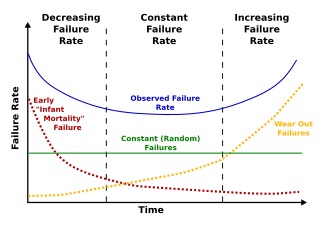 W
WThe bathtub curve is widely used in reliability engineering. It describes a particular form of the hazard function which comprises three parts:The first part is a decreasing failure rate, known as early failures. The second part is a constant failure rate, known as random failures. The third part is an increasing failure rate, known as wear-out failures.
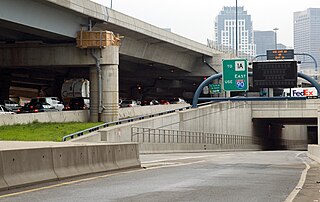 W
WThe Big Dig ceiling collapse occurred on July 10, 2006, when a concrete ceiling panel and debris weighing 26 short tons (24,000 kg) and measuring 20 by 40 feet fell in Boston's Fort Point Channel Tunnel. The panel fell on a car traveling on the two-lane ramp connecting northbound I-93 to eastbound I-90 in South Boston, killing a passenger and injuring the driver. Investigation and repair of the collapse caused a section of the Big Dig project to be closed for almost a full year, causing chronic traffic backups.
 W
WThe Buncefield fire was a major fire at an oil storage facility on 11 December 2005 at the Hertfordshire Oil Storage Terminal, located near the M1 motorway, Hemel Hempstead, in Hertfordshire, England. The terminal was the fifth largest oil-products storage depot in the United Kingdom, with a capacity of about 60 million Imperial gallons of fuel. The terminal is owned by TOTAL UK Limited (60%) and Texaco (40%).
 W
WByford Dolphin is a semi-submersible, column-stabilised drilling rig operated by Dolphin Drilling, a Fred Olsen Energy subsidiary, and in 2009 contracted by BP for drilling in the United Kingdom section of the North Sea for three years. It is registered in Hamilton, Bermuda.
 W
WHMS Captain was an unsuccessful warship built for the Royal Navy due to public pressure. It was a masted turret ship, designed and built by a private contractor against the wishes of the Controller's department. The Captain was completed in April 1870 and capsized on 07 September 1870 with the loss of nearly 500 lives because of design and construction errors that led to inadequate stability.
 W
WThe Casco-class monitor was a unique class of light draft monitor built on behalf of the United States Navy for the Mississippi theatre during the American Civil War. The largest and most ambitious ironclad program of the war, the project was dogged by delays caused by bureaucratic meddling. Twenty ships of the class were eventually built at great expense, but proved so unseaworthy when trialed that they were quickly sidelined, causing a public scandal.
 W
WThe Clyde Arc is a road bridge spanning the River Clyde in Glasgow, Scotland, connecting Finnieston near the Clyde Auditorium and SEC with Pacific Quay and Glasgow Science Centre in Govan. A prominent feature of the bridge is its innovative curved design and the way that it crosses the river at an angle. The Arc is the first city centre traffic crossing over the river built since the Kingston Bridge was opened to traffic in 1970.
 W
WMV Derbyshire was an ore-bulk-oil combination carrier built in 1976 by Swan Hunter, as the last in the series of the Bridge-class sextet. She was registered at Liverpool and owned by Bibby Line.
 W
WOn 14 November 2015, a TGV train derailed in Eckwersheim, Alsace, France, while performing commissioning trials on the second phase of the LGV Est high-speed rail line, which was scheduled to open for commercial service five months later. The derailment resulted in 11 deaths among those aboard, while the 42 others aboard the train were injured. It was the first fatal derailment in the history of the TGV and the third derailment since the TGV entered commercial service in 1981.
 W
WThe Eschede derailment occurred on 3 June 1998, near the village of Eschede in the Celle district of Lower Saxony, Germany, when a high-speed train derailed and crashed into a road bridge. 101 people were killed and 88 were injured. It remains the worst rail disaster in the history of the Federal Republic of Germany and the worst high-speed-rail disaster worldwide. The cause was a single fatigue crack in one wheel that, when it failed, resulted in a part of the wheel becoming caught in a set of points, effectively changing the setting of the points whilst the train was passing over it. This led to the train's carriages going down two separate tracks, causing the train to derail and crash into the pillars of a concrete road bridge, which then collapsed and crushed two coaches. The remaining coaches and the rear power car crashed into the wreckage.
 W
WElectronic components have a wide range of failure modes. These can be classified in various ways, such as by time or cause. Failures can be caused by excess temperature, excess current or voltage, ionizing radiation, mechanical shock, stress or impact, and many other causes. In semiconductor devices, problems in the device package may cause failures due to contamination, mechanical stress of the device, or open or short circuits.
 W
WThe Flixborough disaster was an explosion at a chemical plant close to the village of Flixborough, North Lincolnshire, England on Saturday, 1 June 1974. It killed 28 people and seriously injured 36 out of a total of 72 people on site at the time. The casualty figures could have been much higher if the explosion had occurred on a weekday, when the main office area would have been occupied. A contemporary campaigner on process safety wrote "the shock waves rattled the confidence of every chemical engineer in the country".
 W
WForensic engineering has been defined as "the investigation of failures - ranging from serviceability to catastrophic - which may lead to legal activity, including both civil and criminal". It includes the investigation of materials, products, structures or components that fail or do not operate or function as intended, causing personal injury, damage to property or economic loss. The consequences of failure may give rise to action under either criminal or civil law including but not limited to health and safety legislation, the laws of contract and/or product liability and the laws of tort. The field also deals with retracing processes and procedures leading to accidents in operation of vehicles or machinery. Generally, the purpose of a forensic engineering investigation is to locate cause or causes of failure with a view to improve performance or life of a component, or to assist a court in determining the facts of an accident. It can also involve investigation of intellectual property claims, especially patents.
 W
WThe PS General Slocum was a sidewheel passenger steamboat built in Brooklyn, New York, in 1891. During her service history, she was involved in a number of mishaps, including multiple groundings and collisions.
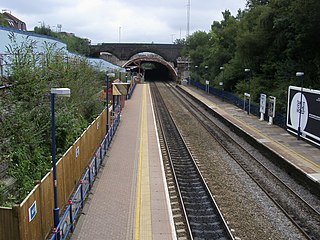 W
WGerrards Cross Tunnel is a 310m long railway tunnel in Gerrards Cross, Buckinghamshire, on the Chiltern Main Line. The purpose of the tunnel was to enable a new Tesco supermarket to be built over the railway line. Plans were initially met with anger by local residents, and the council refused planning permission but this decision was overturned by John Prescott.
 W
WThe Great Molasses Flood, also known as the Boston Molasses Disaster or the Great Boston Molasses Flood, occurred on January 15, 1919, in the North End neighborhood of Boston, Massachusetts. A large storage tank filled with 2.3 million US gal (8,700 m3) weighing approximately 13,000 short tons (12,000 t) of molasses burst, and the resultant wave of molasses rushed through the streets at an estimated 35 mph (56 km/h), killing 21 and injuring 150. The event entered local folklore and residents claimed for decades afterwards that the area still smelled of molasses on hot summer days.
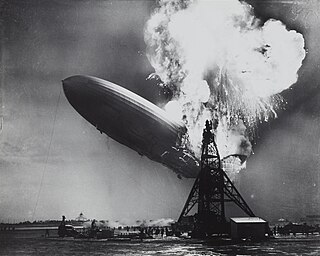 W
WThe Hindenburg disaster occurred on May 6, 1937, in Manchester Township, New Jersey, United States. The German passenger airship LZ 129 Hindenburg caught on fire and was destroyed during its attempt to dock with its mooring mast at Naval Air Station Lakehurst. There were 35 fatalities from the 97 people on board, and an additional fatality on the ground.
 W
WThe Karlino oil eruption was an oil well blowout that took place on December 9, 1980, near Karlino, a town located in Pomerania in northern Poland, near the Baltic Sea coast. The eruption and the fire that followed it put an end to the hope of Poland becoming a "second Kuwait". It took more than a month for Polish, Soviet and Hungarian firefighters to completely extinguish the fire. The eruption was the result of an extensive search for underground oil deposits that took place in the area in 1980.
 W
WThe Knox Mine disaster was a mining accident on January 22, 1959, at the River Slope Mine in Jenkins Township, Pennsylvania.
 W
WMV Kowloon Bridge was a Bridge-class ore-bulk-oil combination carrier built by Swan Hunter in 1973. She sank off the coast of the Republic of Ireland in December 1986.
 W
WLake Peigneur is a brackish lake in the U.S. state of Louisiana, 1.2 miles north of Delcambre and 9.1 mi (14.6 km) west of New Iberia, near the northernmost tip of Vermilion Bay. With a maximum depth of 200 feet, it is the deepest lake in Louisiana.
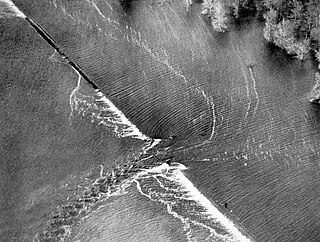 W
WA levee breach or levee failure is a situation where a levee fails or is intentionally breached, causing the previously contained water to flood the land behind the levee.
 W
WThe Maneuvering Characteristics Augmentation System (MCAS) is an automated flight control developed by Boeing which became notorious for its role in two fatal accidents of the Boeing 737 MAX before the aircraft was grounded worldwide. First deployed on the Boeing KC-46 Air Force tanker, the MCAS software flight control law adjusts the horizontal stabilizer to push the nose down when the aircraft is operating in manual flight with flaps up at an elevated angle of attack (AoA). On the Boeing 737 MAX, MCAS was intended to mimic pitching behavior similar to aircraft in the previous generation of the series, the Boeing 737 NG. In both crashes, MCAS was activated by an erroneous indication from an AoA sensor on the exterior of the airplane.
 W
W301 Mission Street is a development in the South of Market district of downtown San Francisco. A mixed-use, primarily residential development, it is the tallest residential building in San Francisco. The blue-gray glass, late-modernist buildings are bounded by Mission, Fremont, and Beale Streets, and the north end of the Transbay Transit Center site.
 W
WThe New River flows north from near Cerro Prieto, through the city of Mexicali, Baja California, Mexico, into the United States through the city of Calexico, California, towards the Salton Sea. The river channel has existed since pre-historic times. However, the river as known today formed from a levee failure and massive flooding that re-created the Salton Sea.
 W
WPiper Alpha was an oil platform located in the North Sea approximately 120 miles (190 km) north-east of Aberdeen, Scotland. It was operated by Occidental Petroleum (Caledonia) Limited and began production in 1976, initially as an oil-only platform but later converted to add gas production.
 W
WResidual stresses are stresses that remain in a solid material after the original cause of the stresses has been removed. Residual stress may be desirable or undesirable. For example, laser peening imparts deep beneficial compressive residual stresses into metal components such as turbine engine fan blades, and it is used in toughened glass to allow for large, thin, crack- and scratch-resistant glass displays on smartphones. However, unintended residual stress in a designed structure may cause it to fail prematurely.
 W
WA safety-critical system (SCS) or life-critical system is a system whose failure or malfunction may result in one of the following outcomes:death or serious injury to people loss or severe damage to equipment/property environmental harm
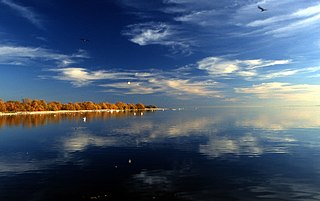 W
WThe Salton Sea is a shallow, saline, endorheic rift lake on the San Andreas Fault at the southern end of the U.S. state of California. It lies between, and within, the Imperial and Coachella valleys, all of which lie within the larger Salton Trough, a pull-apart basin that stretches to the Gulf of California in Mexico. The lake occupies the lowest elevations of the trough, known as the Salton Sink, where the lake surface is 236.0 ft (71.9 m) below sea level as of January 2018. The deepest point of the lake is only 5 ft (1.5 m) higher than the lowest point of Death Valley. The New, Whitewater, and Alamo rivers, combined with agricultural runoff, are the primary sources that feed the lake.
 W
WThe Samsung Galaxy Note 7 is a discontinued Android-based phablet designed, developed, produced and marketed by Samsung Electronics. Unveiled on 2 August 2016, it was officially released on 19 August 2016 as a successor to the Galaxy Note 5. It is Samsung's first phone with a USB-C connector, and the last phone in the Galaxy Note series to have a physical home button. Although it is the sixth main device in the Galaxy Note series, Samsung branded its series number as "7" instead of "6" so consumers would not perceive it as being inferior to the flagship Samsung Galaxy S7, and to prevent confusion about the order of release due to the same release year (2016).
 W
WA single point of failure (SPOF) is a part of a system that, if it fails, will stop the entire system from working. SPOFs are undesirable in any system with a goal of high availability or reliability, be it a business practice, software application, or other industrial system.
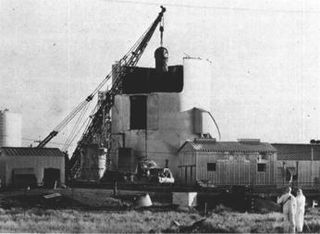 W
WThe SL-1, or Stationary Low-Power Reactor Number One, was a United States Army experimental nuclear power reactor in the United States that underwent a steam explosion and meltdown on January 3, 1961, killing its three operators. The direct cause was the improper withdrawal of the central control rod, responsible for absorbing neutrons in the reactor core. The event is the only reactor accident in U.S. history to have resulted in immediate fatalities. The accident released about 80 curies (3.0 TBq) of iodine-131, which was not considered significant due to its location in the remote high desert of eastern Idaho. About 1,100 curies (41 TBq) of fission products were released into the atmosphere.
 W
WStructural integrity and failure is an aspect of engineering that deals with the ability of a structure to support a designed structural load without breaking and includes the study of past structural failures in order to prevent failures in future designs.
 W
WThe 1940 Tacoma Narrows Bridge, the first Tacoma Narrows Bridge, was a suspension bridge in the U.S. state of Washington that spanned the Tacoma Narrows strait of Puget Sound between Tacoma and the Kitsap Peninsula. It opened to traffic on July 1, 1940, and dramatically collapsed into Puget Sound on November 7 the same year. The bridge's collapse has been described as "spectacular" and in subsequent decades "has attracted the attention of engineers, physicists, and mathematicians". Throughout its short existence, it was the world's third-longest suspension bridge by main span, behind the Golden Gate Bridge and the George Washington Bridge.
 W
WThe Therac-25 was a computer-controlled radiation therapy machine produced by Atomic Energy of Canada Limited (AECL) in 1982 after the Therac-6 and Therac-20 units.
 W
WThe Twin Shaft disaster occurred in the Newton Coal Company's Twin Shaft Colliery in Pittston, Pennsylvania, on June 28, 1896, when a massive cave-in killed fifty-eight miners.
 W
WVasa or Wasa is a Swedish warship built between 1626 and 1628. The ship foundered after sailing about 1,300 m into her maiden voyage on 10 August 1628. She fell into obscurity after most of her valuable bronze cannon were salvaged in the 17th century until she was located again in the late 1950s in a busy shipping area in Stockholm harbor. The ship was salvaged with a largely intact hull in 1961. She was housed in a temporary museum called Wasavarvet until 1988 and then moved permanently to the Vasa Museum in the Royal National City Park in Stockholm. The ship is one of Sweden's most popular tourist attractions and has been seen by over 35 million visitors since 1961. Since her recovery, Vasa has become a widely recognised symbol of the "Swedish Empire".
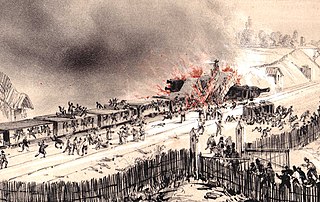 W
WThe Versailles rail accident occurred on 8 May 1842 in the cutting between Meudon and Bellevue stations on the railway between Versailles and Paris following celebrations at the Palace of Versailles marking King Louis Philippe's saint's day. A train returning to Paris derailed at Meudon after the leading locomotive broke an axle, and the carriages behind piled into it and caught fire. It was the first French railway accident and the deadliest in the world at the time, causing between 52 and 200 deaths, including that of explorer Jules Dumont d'Urville and his wife Adèle Dumont D'Urville. The accident led the French to abandon the practice of locking passengers in their carriages.
 W
WThe Westinghouse J40 was an early high-performance afterburning turbojet engine designed by Westinghouse Aviation Gas Turbine Division starting in 1946 to a US Navy Bureau of Aeronautics (BuAer) request. BuAer intended to use the design in several fighter aircraft and a bomber. However, while an early low-power design was successful, attempts to scale it up to its full design power failed, and the design was finally abandoned, deemed a "fiasco" and a "flop".
 W
WWhen Technology Fails, edited by Neil Schlager, is a collection of 103 case studies about significant technological disasters, accidents, and failures of the 20th century. It was published in 1994 by Gale Research, Inc. It was one of the top referenced books in the New York Public Library in 1995. The book was updated and re-released in 2005.